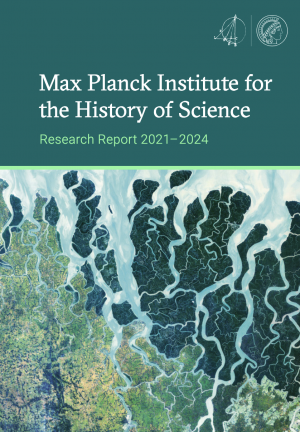MAX PLANCK RESEARCH REPORT
In 2023 I held a postdoctoral position at the Max Planck Institute for the History of Science, Department on Artifacts, Action, Knowledge, a research institution dedicated to the study of the history of science, technology, and medicine.
Over its more than three decades of existence, it has earned an exemplary reputation for its commitment to methodological innovation, multidisciplinary exchange, collaborative research, and the development of digital methods in historical research.
The Department on Artifacts, Action, Knowledge is distinctive within the broader field of the history of science and technology for its focused investigation of materiality, global comparative approach, and cross-regional, interdisciplinary agenda. Dedicated to examining fundamental aspects of science, technology,
and medicine, such as reproducibility, feasibility, and application, we critically analyze how principles such
as improvement, accumulation, and efficiency drive scientific and technological change. We actively develop
new historical methods and formats and engage with a broad audience in exploring how power and
judgment have historically shaped—and continue to shape—advancements in science and technology
The Department on Artifacts, Action, Knowledge uses the “making things work” model of world-making as it offers a fresh and globally relevant framework to address the historical role of materials and social action. This model encompasses all sociomaterial practices of knowledge production that produce effects—both positive and negative—and thus shape the world. Breaking with traditional, dichotomous approaches to the dynamics of innovation or invention, it unveils mechanisms of power, movements, and claims of ownership in scientific and technical change by recognizing three key expressions of knowledge: material artifacts, social action, and formalized epistemic expressions.
Proteins and Fibers collaborated with other working groups and teams to exchange information on useful resources and methods for the study of material practices. For instance, the exploration of research from paleobotany, to geology, zooarcheology, archaeometry, and adjacent sciences has benefited from crossover conversations with the working groups Visualizations of the Heavens and AMoS. These exchanges also included interactions with the Ethnological Museum of Berlin (now in the Humboldt Forum), the MPI of Colloids and Interfaces, and the Cluster of Excellence Matters of Activity, which expanded our understandings of materials such as catgut and textiles. And, together with Collection Ecologies, we explored conceptual and practical multidisciplinary approaches to animal material In natural history collections.
https://www.mpiwg-berlin.mpg.de/sites/default/files/2025-03/PDF-A_MPIWG_Research_Report_WEB_mid.pdf
- HEZHE FISH SKIN
- AINU ELM BARK
- INDIGENOUS ARCTIC FISH SKIN
- MAX PLANCK RESEARCH REPORT
- UAL TACKLING CLIMATE ISSUES
- SMITHSONIAN OCEAN MAGAZINE: FISH SKIN
- DA GALLIANO ALLA CULTURA INUIT
- LCF PHD RESEARCHER PROFILE: ELISA PALOMINO
- SMITHSONIAN MAGAZINE FISHSKIN
- INNOVATION IN THE NORTHERN DIMENSION COUNTRIES
- FISH SKIN A HISTORICAL MATERIAL
- YOMIURI SHIMBUM FISHSKIN
- ELISA PALOMINO HORIZON 2020 FISHSKIN CONSORTIUM
- BRINGING FISH SKIN TO MARKET
- UAL MEET ELISA PALOMINO
- TEXTILES, IDENTITY AND INNOVATION
- HAKAI MAGAZINE
- ARCTIC STUDIES CENTER NEWSLETTER
- UAL FISHSKIN
- UAL BRINGING FISHSKIN TO MARKET
- FISHSKIN CONFERENCE IN ICELAND 2019
- SDG 14 LIFE BELOW WATER FISHSKIN FOR FASHION
- ASC FASHION SKETCHBOOK WORKSHOP
- FULBRIGHT AWARD TO THE SMITHSONIAN INSTITUTION
- WENGFENG YOU HEZHEN FISHSKIN CRAFTSPERSON
- FISH SKIN NEW FRONTIER FOR ECOFRIENDLY FASHION
- SIX SUSTAINABLE ECO-FRIENDLY MATERIALS
- BUNKA GLOBAL FASHION
- SUSTAINABLE FASHION: FISH LEATHER
- NORDIC FISHSKIN WORKSHOP



